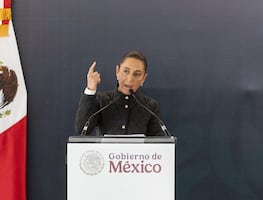Más Información

Derrota de México en disputa por maíz transgénico contra EU; estos son los argumentos de Sheinbaum y AMLO para prohibirlo

Óscar Rentería Schazarino, ha operado contra CJNG, Viagras y Templarios; es el nuevo secretario de Seguridad en Sinaloa

Claudia Sheinbaum pide respeto para Maru Campos; gobernadora anuncia acuerdo para transporte público

Claudia Sheinbaum anuncia los Centros de Cuidado Infantil en Chihuahua; inaugura hospital en Ciudad Juárez
Today, over 30 million Mexican students are resuming their classes at all levels; however, the new distance learning program is taking place amid an uncertain scenario as it is still unknown when will students return to classrooms; moreover, the results of this program could deepen inequality in the country.
Although the Education Ministry created TV programs to take classes to every home and allied with TV broadcasters, these efforts cannot guarantee that the TV programs are welcomed by all schoolchildren.
Firstly, students who live in remote indigenous communities might not have access to distance learning. For example, in Tiocuatitla, Hidalgo, out of 300 residents, only five families have a television, and three have a cellphone. No one has internet and very few have electricity. For the 37 children who attended the public school, resuming school will be different than in the rest of the country. Although education authorities are still discussing the issue, everything indicates children must rely on books and teachers who visit their communities every three or four weeks.
Secondly, some children do have a television at home, but who will have to share it with their siblings, while their parents face problems like low wages or unemployment.
Recommended: Mexico will broadcast classes on TV, children will stay at home
However, there is a sector that has all the necessary equipment to resume their education: one or two devices, internet , and appropriate space to study at home.
In the end, it doesn’t matter what percentage of students are prepared for distance learning , although it is a fact that this is not the majority of schoolchildren, the problem is that the inequality gap regarding learning will deepen.
At high school level, education authorities warned that students might prefer to work to help their families financially than focus on distance learning, especially if they have limited resources.
The pandemic has revealed that the current and previous governments weren’t able to expand connectivity. Mexico has discovered that it is far from reaching its goals concerning education and had to turn to television, a technology first used 70 years ago. The country is now facing a harsh reality.
gm






